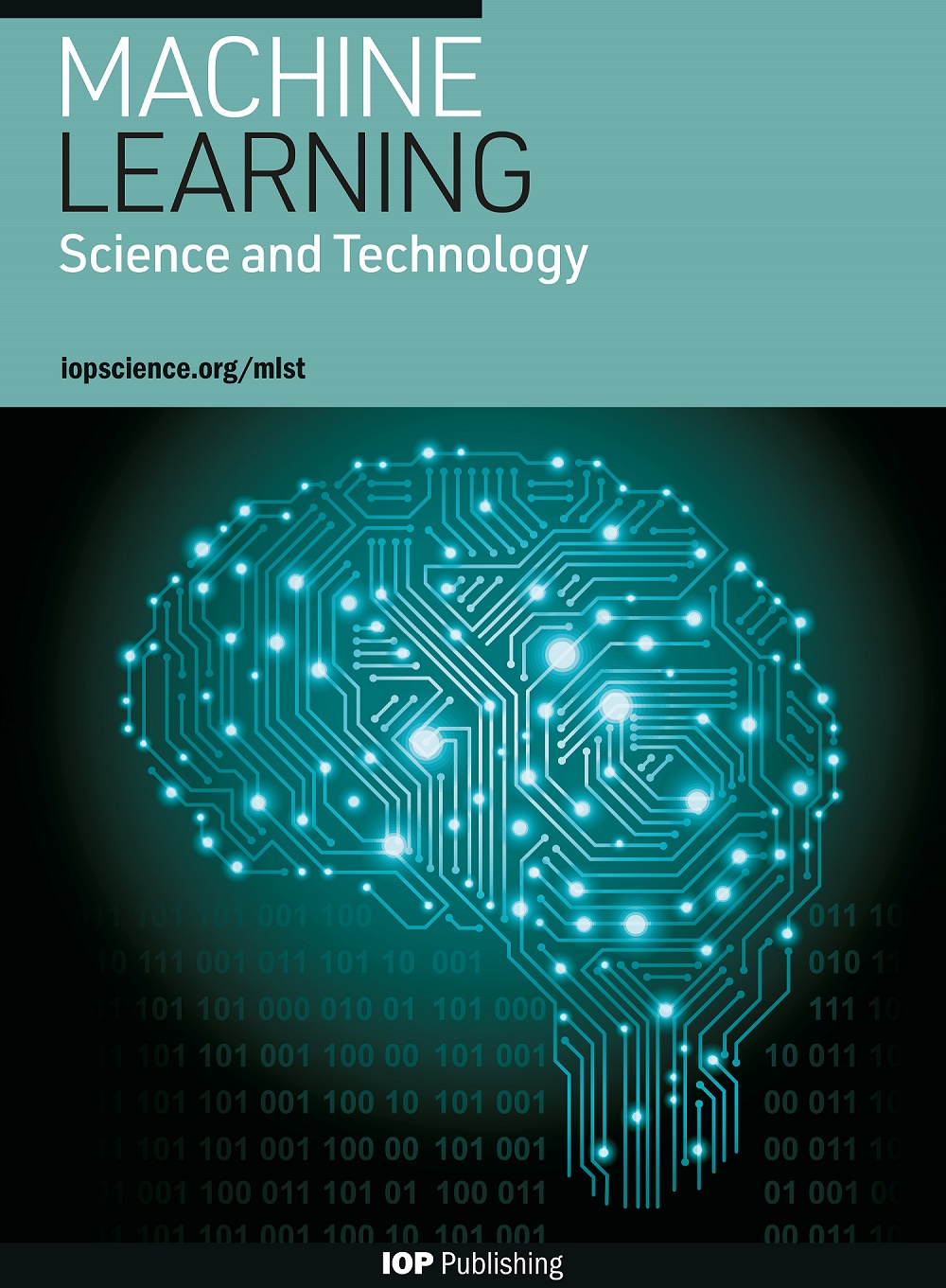Deep probabilistic direction prediction in 3D with applications to directional dark matter detectors
IF 4.6
2区 物理与天体物理
Q1 COMPUTER SCIENCE, ARTIFICIAL INTELLIGENCE
引用次数: 0
Abstract
We present the first method to probabilistically predict 3D direction in a deep neural network model. The probabilistic predictions are modeled as a heteroscedastic von Mises-Fisher distribution on the sphere , giving a simple way to quantify aleatoric uncertainty. This approach generalizes the cosine distance loss which is a special case of our loss function when the uncertainty is assumed to be uniform across samples. We develop approximations required to make the likelihood function and gradient calculations stable. The method is applied to the task of predicting the 3D directions of electrons, the most complex signal in a class of experimental particle physics detectors designed to demonstrate the particle nature of dark matter and study solar neutrinos. Using simulated Monte Carlo data, the initial direction of recoiling electrons is inferred from their tortuous trajectories, as captured by the 3D detectors. For keV electrons in a 70% He 30% CO2 gas mixture at STP, the new approach achieves a mean cosine distance of 0.104 (26∘) compared to 0.556 (64∘) achieved by a non-machine learning algorithm. We show that the model is well-calibrated and accuracy can be increased further by removing samples with high predicted uncertainty. This advancement in probabilistic 3D directional learning could increase the sensitivity of directional dark matter detectors.三维深度概率方向预测,应用于定向暗物质探测器
我们首次提出了在深度神经网络模型中以概率方式预测三维方向的方法。概率预测被建模为球面上的异方差 von Mises-Fisher 分布,从而提供了一种量化不确定性的简单方法。这种方法概括了余弦距离损失,当不确定性被假定为跨样本均匀时,余弦距离损失是我们损失函数的一种特例。我们开发了使似然函数和梯度计算稳定所需的近似值。该方法被应用于预测电子的三维方向,这是一类粒子物理实验探测器中最复杂的信号,旨在证明暗物质的粒子性质和研究太阳中微子。利用模拟蒙特卡洛数据,通过三维探测器捕捉到的电子迂回轨迹,推断出反冲电子的初始方向。对于在 STP 条件下 70% He 30% CO2 混合气体中的 keV 电子,新方法实现的平均余弦距离为 0.104 (26∘),而非机器学习算法实现的平均余弦距离为 0.556 (64∘)。我们的研究表明,该模型校准良好,通过去除预测不确定性较高的样本,可以进一步提高精度。概率三维定向学习的这一进步可以提高定向暗物质探测器的灵敏度。
本文章由计算机程序翻译,如有差异,请以英文原文为准。
求助全文
约1分钟内获得全文
求助全文
来源期刊

Machine Learning Science and Technology
Computer Science-Artificial Intelligence
CiteScore
9.10
自引率
4.40%
发文量
86
审稿时长
5 weeks
期刊介绍:
Machine Learning Science and Technology is a multidisciplinary open access journal that bridges the application of machine learning across the sciences with advances in machine learning methods and theory as motivated by physical insights. Specifically, articles must fall into one of the following categories: advance the state of machine learning-driven applications in the sciences or make conceptual, methodological or theoretical advances in machine learning with applications to, inspiration from, or motivated by scientific problems.
 求助内容:
求助内容: 应助结果提醒方式:
应助结果提醒方式:


